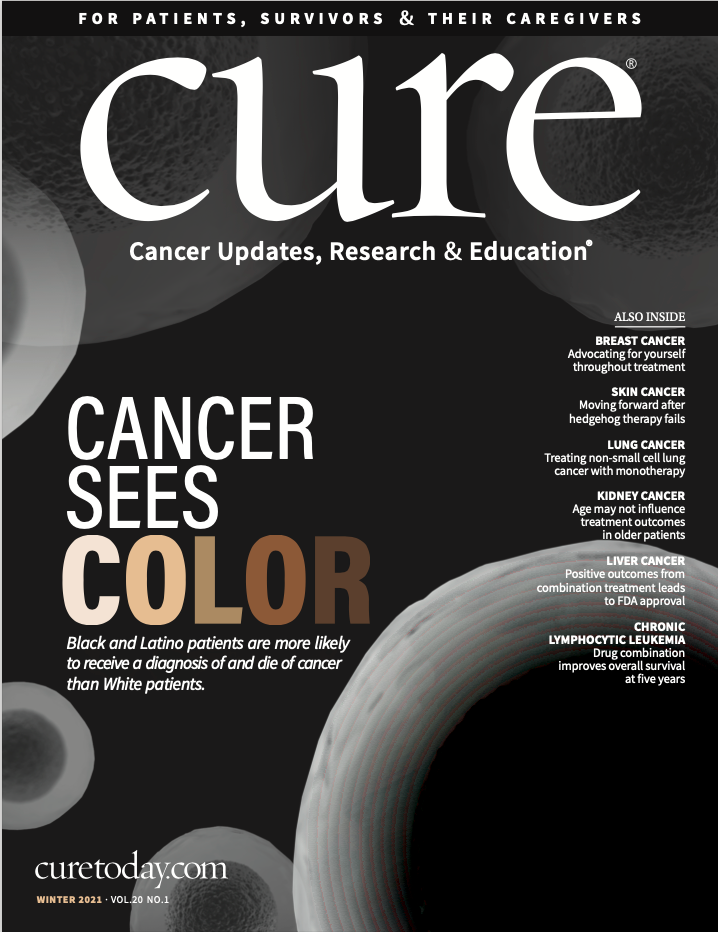Publication
Article
CURE
Venclexta-Rituxan Combo Continues to Show Survival Benefit Through 5 Years in Relapsed/Refractory CLL
Author(s):
Compared with patients assigned bendamustine with Rituxan, those assigned Venclexta with Rituxan maintained an overall survival benefit, with a five-year OS estimate of 82.1% for the Venclexta with Rituxan group vs. 62.2% for the bendamustine with Rituxan group.
A five-year analysis of the MURANO trial presented at the ASH Annual Meeting and Exposition demonstrated that patients with relapsed or refractory chronic lymphocytic leukemia (CLL) treated with Venclexta (venetoclax) and Rituxan (rituximab) had a sustained progression-free survival (PFS) and overall survival (OS) benefit at five years compared with those treated with bendamustine and Rituxan.
“Overall, sustained undetectable (minimal residual disease, or the small number of cancer cells in a patient during or after treatment), progression-free survival and overall survival benefits provide further support for the use of a fixed duration (Venclexta with Rituxan) in patients with relapsed/refractory CLL,” said Dr. Arnon P. Kater, leader of tumor immunology at the Cancer Center Amsterdam, during a virtual presentation of the data.
In the MURANO trial, 389 patients with relapsed/refractory CLL were randomly assigned either Venclexta with Rituxan (194 patients) or bendamustine with Rituxan (195 patients).
“The whole MURANO (trial) is kind of a unique study,” said Kater in an interview with CURE®. “It was the first study that compared novel agent treatments with standard chemo-immunotherapy. Although (Imbruvica) and other novel targeted agents were already studied around the same time or a little bit earlier, it will never really be a head-to-head comparison between standard chemo-immunotherapy.”
After a follow-up of 59.2 months, the benefit observed in patients assigned Venclexta with Rituxan regarding PFS was sustained compared with those assigned bendamustine with Rituxan. The median PFS in the Venclexta with Rituxan group was 53.6 months compared with 17 months for the bendamustine with Rituxan group. Of the 130 patients who completed two full years of therapy with Venclexta and Rituxan, estimates of PFS at 36 months after treatment completion was 51.1%.
Compared with patients assigned bendamustine with Rituxan, those assigned Venclexta with Rituxan maintained an OS benefit, with a five-year OS estimate of 82.1% for the Venclexta with Rituxan group vs. 62.2% for the bendamustine with Rituxan group. Median OS was not achieved in either group in this study.
Patients assigned Venclexta with Rituxan who reached the end of treatment without disease progression and had undetectable minimal residual disease (83 patients) had an improved OS outcome compared with those who had minimal residual disease (35 patients). Survival estimates three years after end of treatment was 95.3% for those with undetectable minimal residual disease and 85% for those with minimal residual disease.
In patients with undetectable minimal residual disease, 32 did not have disease progression and continued to have undetectable minimal residual disease out to five years. In addition, four patients had disease progression without prior confirmed conversion of minimal residual disease, and 47 patients had minimal residual disease conversion, with a median conversion time to minimal residual disease from the end of treatment of 19.4 months. Of the 47 patients who converted to minimal residual disease, 19 developed disease progression at a median time of 25.2 months. It is important to note that these 19 patients had more rapidly increasing rates of minimal residual disease after completing treatment compared with those with minimal residual disease but remained free from disease progression.
“The longer undetectable (minimal residual disease) is maintained, the likelihood of conversion to (minimal residual disease) positivity is diminished,” said Kater during the presentation.
Several high-risk factors were associated with an increased risk of disease progression in patients with undetectable minimal residual disease at the end of treatment including chromosome 17p deletion (typically associated with rapid disease progression), genomic complexity (three or more subtle genetic abnormalities) and unmutated immunoglobulin heavy chain variable region (which may cause cancer cells to divide rapidly). Patients without these factors “were more likely to maintained undetectable (minimal residual disease) or experienced (minimal residual disease) conversion without progressive disease at this follow-up,” said Kater during the presentation.
Researchers also investigated minimal residual disease growth rate in this trial in 102 patients assigned Venclexta with Rituxan and 104 patients assigned bendamustine with Rituxan. The Venclexta with Rituxan group had a longer mean doubling time (the time for cancer cells or a tumor to double in size) compared with the bendamustine with Rituxan group (52 days vs. 72 days). Faster minimal residual disease doubling times after the end of treatment was also observed in patients with 17p deletion (44.9 days vs. 85.6 days), genetic complexity (61.6 days vs. 96.4 days) and unmutated immunoglobulin heavy chain variable region (60.2 days vs. 120.3 days) compared with those without these risk factors.
“I’m pretty much myself a believer that, if you can, fixed duration is actually better, and (there are) three reasons for this,” said Kater in the interview. “First one is the costs. … The second one is, indeed, side effects, and although all those novel targeted agents, especially if you compared it to chemotherapy, give much less severe complications, (but) it’s still complications. … The third one, most important, is we know for sure that if you take a drug until relapse, that at that moment, this drug doesn’t work anymore. … Still, we have to test it, (but) if you give (the drug) and you stop at a certain amount of time, you can actually repeat the same very effective drugs later on.”
For more news on cancer updates, research and education, don’t forget to subscribe to CURE®’s newsletters here.






